 As we kick off a new year and a new decade, it feels like the starter’s timer has just been clicked into action. The next four years should prove to be highly interesting — and for all of aviation, not only Light-Sport Aircraft, Sport Pilot kit aircraft, and ultralights. Change can be difficult, but it’s coming. For the most part, I feel this is heading in a great direction even if some may struggle with elements of the new rule.
As we kick off a new year and a new decade, it feels like the starter’s timer has just been clicked into action. The next four years should prove to be highly interesting — and for all of aviation, not only Light-Sport Aircraft, Sport Pilot kit aircraft, and ultralights. Change can be difficult, but it’s coming. For the most part, I feel this is heading in a great direction even if some may struggle with elements of the new rule.
Earlier, an often-shared report discussed the changes FAA plans as part of a “deregulation” of Light-Sport Aircraft. Below, you can see a video that stimulated numerous comments.
An updated report is still being prepared from a late-fall 2019 discussion with FAA rule writers. That will be sent to LAMA members first with specific details. Other industry pros will get a simpler update so all the makers of our great aircraft can be prepared when the rule is issued no more than four years from now.
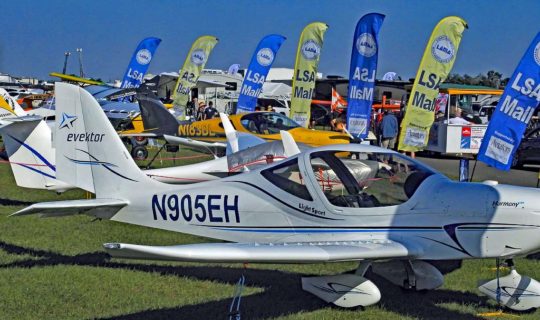 In this article, I will answer some common questions. The goal is not to repeat the earlier info but to provide clarification. Call this an FAQ (Frequently Asked Questions) review.
In this article, I will answer some common questions. The goal is not to repeat the earlier info but to provide clarification. Call this an FAQ (Frequently Asked Questions) review.
Light-Sport Aircraft are being presented with new opportunities and I hope both manufacturers and pilots will take full advantage of all the new rule may offer.
Wait, Weight! Do Tell Me
A common misconception is that “FAA is raising the weight of LSA.” Nope, they are not. They are creating a Power Index that will describe the aircraft’s size while trying to keep LSA “safe, simple, and easy to fly” yet encourage them to grow and develop. That short phrase is FAA’s stated goal, so, simplistically, larger airplanes will require larger wings to keep their flight qualities docile.
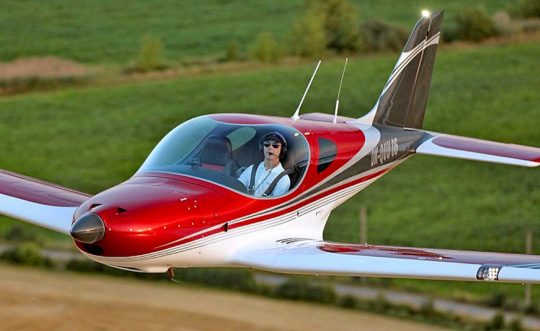
The striking Bristell RG (retractable gear) may be available as a Light-Sport Aircraft. Also see Bristell USA.
Aircraft will indeed be permitted to be heavier, perhaps even as high as the 3,600-pound number once stated (though more likely topping out at 3,000 pounds). The fall 2019 speculation was wrong but weights of LSA will indeed rise.
FAA’s goal here is not to fit Cessna 150s and 172s or Pipers or other legacy GA airplanes into the mix (though they may qualify), but rather to increase the capability of LSA and to “bridge the gap between present-day LSA and certified aircraft meeting Part 23” (which itself is changing), said FAA personnel.
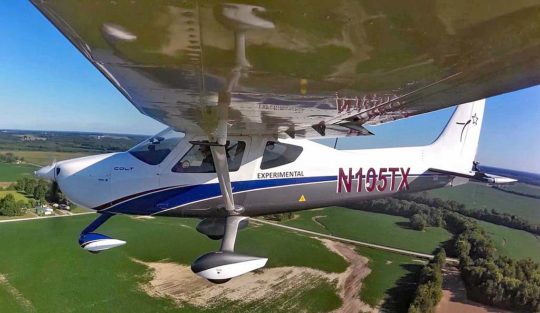
Texas Aircraft‘s Colt 100 is a clean-sheet design approved in 2019.
One hard number associated with FAA’s Power Index — basically a formula that hopes to assure agency goals — is stall speed. While horsepower may also be capped at 200 horsepower, it is nearly certain that stall speed will be limited to 50 knots while using devices like flaps and other wing modifications.
Many LSA do NOT need to get heavier. I think of weight shift trikes, powered parachutes, gyroplanes, and motor gliders. Many fixed wing designs are also perfectly fine as they are. A heavier aircraft, requiring more raw material and needing more power will surely be more costly although they should offer additional capabilities. Some producers strive to keep prices low and affordable so they might stay at 1,320 pounds or their present weight… nothing wrong with that, of course.
Other Benefits
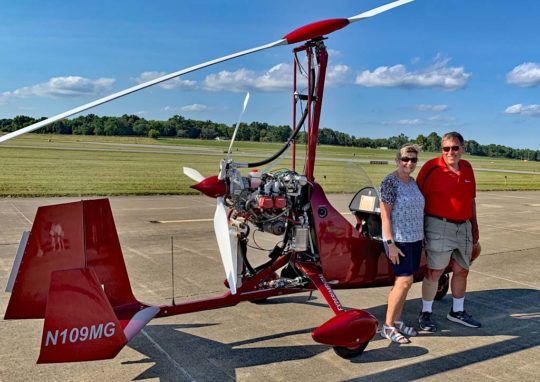
ByDanJohnson.com office manager, Randee Laskewitz, went up in the Magni gyro with expert gyronaut, Greg Gremminger of Magni Gyro USA.
I reported that LSA may also get: • in-flight adjustable props, • more seats, • higher speeds, • electric or hybrid propulsion, • fully-built gyroplanes should arrive, and — the big one: we hope for • commercial use of LSA. Some pilots will see this as a chance to pursue a new business and manufacturers may embrace this as a way to sell more aircraft.
Many have asked about retractable gear. While I did not report this earlier, that configuration is also in planning. However, as stated earlier, none of this is certain even if it is likely. Several other FAA departments have to weigh in and then it will (later, perhaps in 2021?) be released for public comment, which could further change it.
FAQs from the Video Below
As you can read for yourself if you wish, many comments were posed after the video was uploaded. Here is a brief summary of what I read among the comments:
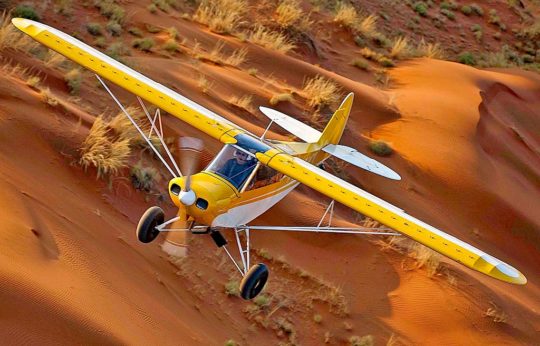
Why Build Now? — One commenter asked, “Why produce something under the old standards if there are changes coming?” As mentioned above, some aircraft do not need to change; I can think of many that are ideal as they are now. However, an ambitious manufacturer will see new markets to explore with larger, faster, more capable aircraft. Just because a 2024 LSA could weigh 3,000 pounds doesn’t mean it must. However, if a builder does wish to pursue a new model, they need information sooner than later.
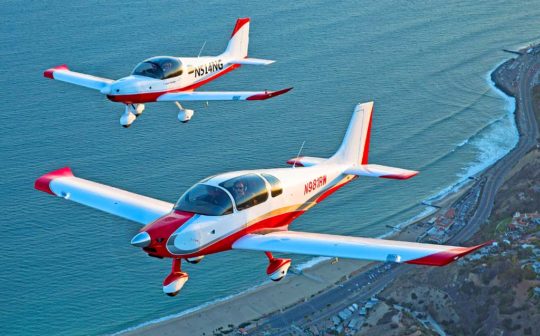
The Airplane Factory USA flies the Sling 2 in formation with Sling 4.
Why Buy Now? — Impending rule change can cause market paralysis, which would be a most regretful result. Please, potential buyers… remember that this rule will not become effective for around four years. If you wait for something later, you will miss out on lots of good flying over those years. You can always sell what you have now or may acquire during the next four years; used LSA sales are a growing phenomenon and offer more affordable prices.
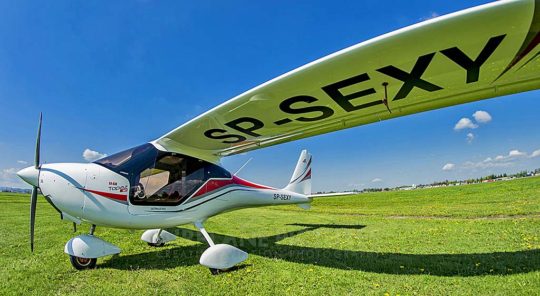
Super Sexy? — Ekolot America‘s shapely Topaz lives up to its registration numbers. photo by Pawel Hawrot
If you cannot live without an in-flight adjustable prop or retractable gear or four seats or other promises, well, you’re stuck. You must buy a much-more costly (probably older) certified aircraft. Others could spend the hours to build a kit or buy one some other person built. If you fly for fun, you have so many choices now it’s hard to choose the ideal one for you. Need help deciding? Try PlaneFinder 2.0; it’s fun and may help you select your perfect LSA.
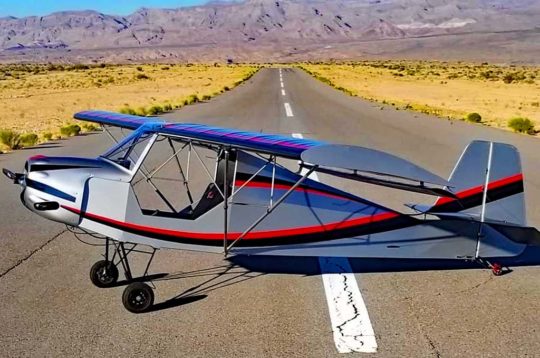
Badland Aircraft’s F-series Part 103 entry was a hit when it debuted at EAA Airventure Oshkosh 2019.
Won’t Current LSA Lose their Value? — Legacy Cessnas, Cirruses, or Pipers have faced this music for decades. Anything new — car, boat, RV, etc. — will lose some value after purchase. However, LSA will hold up much better than your current computer or TV, both of which will lose nearly all their value within weeks after you take it home.
You are urged to keep in mind that enjoying a present-day LSA is a thing of joy… now! If you wait, think about all the great flights you will miss. You have 150 models to choose between: see our SLSA List.
Flying GA Airplanes with a Sport Pilot certificate (without an aviation medical) — A commenter asked, “Will this new rule will allow planes like the Piper Cherokee to be considered as acceptable for LSA status and [can owners] change their certification [to LSA]?” Simply, we don’t know yet. I am quite sure the effort to allow weight to rise and to add other features was not to bring in legacy GA designs to become LSA. FAA’s usual pattern is that when an aircraft is certified or accepted as one type, it generally cannot be changed to another classification.
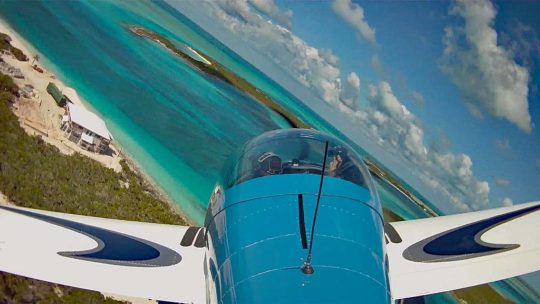
Our hope is that FAA will allow the Sport Pilot certificate to be used to fly heavier, more capable aircraft perhaps using the logbook endorsement method employed today. For example, a basic SP certificate does not allow flight into Class B airspace until the pilot has received additional training for this. However, after getting more instruction, a SP ticket holder can fly into Class B once securing only a logbook endorsement (no further testing is needed).
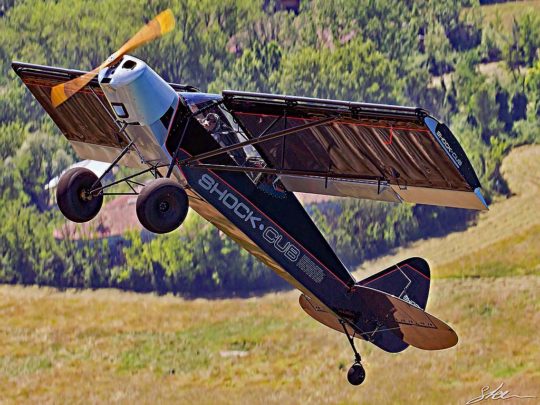
Shockingly short takeoff roll and a blistering climb makes Sportair USA‘s LSA true to its name.
Multiple Engines on LSA — A commenter asked, “How about a multiengine LSA?” LAMA has posed this question to FAA and it may be possible. At least for electric propulsion, the idea of what’s often called “distributed lift” — that is, multiple motors/props driven by a common energy source — is being considered by rule writers.
Bad FAA? — Although a number of commenters threw darts at FAA for not being more responsive or for taking too long with this regulation, LAMA advocates for industry have seen FAA be very open to new ideas for LSA and for letting industry handle more of the approval process. The agency has been remarkably receptive to every idea LAMA has presented and they specifically say they want to be “less restrictive, less prescriptive.”
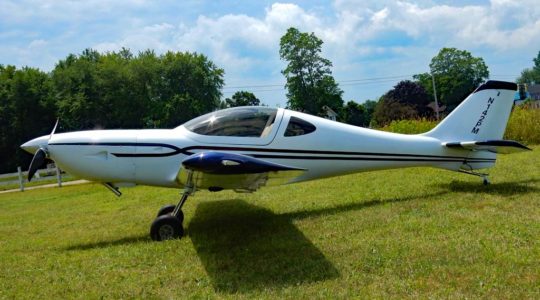
The one-and-only Arion Lightning taildragger has that go-fast look.
Yes, 2023 seems a long way off now, but two points are worthwhile: (1) to be all completed by the end of 2023, dictated by a congressional mandate attached to FAA budget funding, rule writers must complete their final drafts by the end of 2021 or so; (2) this is a sweeping, comprehensive rule with lots of detail. I have observed FAA personnel working diligently on this but it will take a couple years more to sort out hundreds of points… especially as this significantly changes how FAA does business (giving industry more leeway to devise methods and standards). I urge patience.
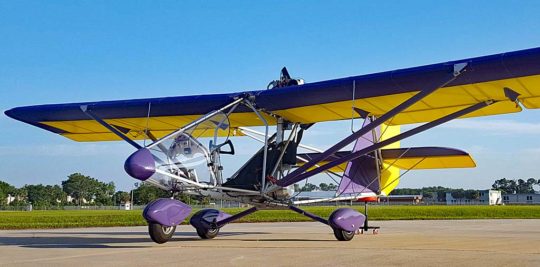
U-Fly-It‘s Aerolite 103 is so popular they can barely keep up.
Changing Part 103 Ultralight Vehicles — (A fair number of comments spoke to Part 103 ultralights.) Nope, no changes coming. While some think this is imperative, many experts feel certain that to ask for changes will be to upset the least-regulated form of manned flight in the USA. Other countries have adopted similar hands-off rules (SSDR in England; 120-Kilogram Class in Germany, etc.). Many believe that asking for any change to Part 103 could potentially ruin the charm of these lightest-of-aircraft… ‘er “vehicles.” Perhaps later, but no change to Part 103 is sought at this time.
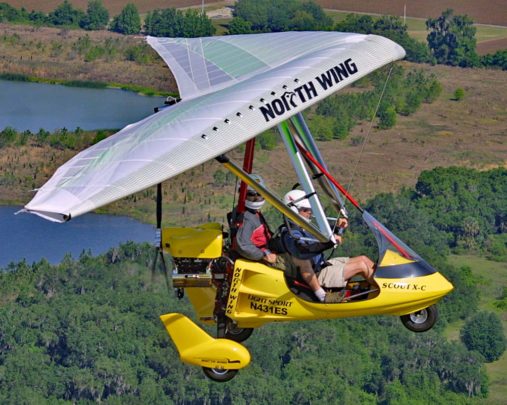
North Wing makes wings for many trikes plus their own LSA models.
The good news about Part 103 is you have several good choices now (Kolb Firefly, Aerolite 103, Badlands F-series, and others plus a number of trikes or PPCs or PPGs). Those aircraft are selling well enough that the first two mentioned are backed up trying to satisfy demand.
More? — It’s great that pilots are reacting to this news and that manufacturers are studying everything they can as they plan their next steps. Indeed, the next four years will be very exciting — both positively and confusingly. Change is coming. Our mission is to give you more info, to help you stay informed, and hopefully all will see ways the coming changes will be good for them.
Nonetheless, to repeat, LSA manufacturers are building some fine aircraft today, in a dizzying number of models and configurations. Pilots have never seen a better time to buy and fly something you love. So, get out and do so — but be smart and safe in your enjoyment.
Happy New Year!
The lead photo seen on the home page was of a Progressive Aerodyne Searey LSX dubbed “Phaeton” and owned by Robert Richardson. It depicts the Maryland state flag in its graphics. A Searey is used by RS Aerotech’s project to develop single lever control for an in-flight adjustable prop.


Dan, you and the rest of the LSA market appear to be ignoring the evtol market; which I and most personal transport enthusiasts see as the primary LSA market for getting around; and making evtols roadable. The current LSA market without evtols; is the model T market of LSAs and will be the classic and antique LSA markets within 4 to 20 years. While most of the evtols are propeller thrust based and not particularly practical; like helicopters; one evtol stands out for me: the BlackFly by Opener; a biplane with 4 motors and 4 propellers on each wing. Allowing air to be pulled over the wing allowing nearly vertical flight; just a brilliant flight solution using both lift from the wing and propeller lift. With 34,000 flying hours on the BlackFly; a triple redundant flight control system; nothing safer or better appears to exist. With airliners being retired at 20,000 to 30,000 hours of flying time. The FAA appears to be exercising overkill on the flying time for the Blackfly; and no one is saying why. Can you get the FAA to say 34,000 flying test hours is more than enough and the BlackFlys should be licensed and a production certificate issued to Opener and anyone else Opener designates as a manufacturer of the BlackFly. Would you please talk to your FAA contacts and insure the above happens. You know the real challenges will be from new pilots of the BlackFly and not the BlackFly itself. And the FAA appears to not have considered this. Small plane flying is just plane/plain fun; coming from a 52 year flying pilot, not a lot, just regular. And the BlackFly should be even more wonderful; not having to use an airport; having the BlackFly at one’s place of residence and using roads or highways that have no overhead wires nearby, no trees nearby, no pedestrians nearby, and few if any other vehicles nearby. I look forward to hearing from you on what the FAA says since they have not commented publicly yet and Opener has stayed very secretive about nearly everything they are doing during the last 18 months. Opener says they are going to sell the BlackFly for the price of an SUV; which sounds like less than any other LSA. Or people will likely be breaking down Opener’s doors to buy a BlackFly; especially once several hundred to a thousand are out flying; and people can see for themselves the BlackFly capabilities. Your help is needed here to focus on BlackFly pilots and not on Opener and not on the BlackFly evtol aircraft. We all know there will be at least some unscheduled landings and perhaps crashes of the BlackFly. But their numbers should be small compared to other LSAs and other type certificated aircraft. I will bet on it; you should too; and the FAA should also and be ready for what ever comes their way in this regard. I believe the FAA will be pleasantly surprised in the instance of the BlackFly flights; no or few flight complications needing investigation. We will only find out after Opener starts selling the BlackFly. And they have not yet and it must be due to the FAA not yet supplying a LSA production certificate to Opener. All. you can find out would be extremely helpful; assuming you publish all the latest you find out about the BlackFly and Opener.
Dan, assuming I get an opportunity to buy a BlackFly; which is still an open question and could stay that way for a year or more. The one thing all BlackFly pilots will want and need is a document that says the BlackFly is a roadable aircraft and can takeoff and land where ever there are not any nearby overhead wires, no nearby large trees, no nearby pedestrians, or few or no vehicles nearby; and weather standards allow operation. Operating off airport; you know the local police and sheriffs will be watching. Meaning a document from either the FAA or Opener or both is a necessity to hand to law enforcement whenever they come around; so they know the off airport operation is authorized under the conditions stated. I have asked the FAA for this type of document; and I expect them to take a while to come up with it, unfortunately. You can probably help here by making the request through your FAA contacts for this document. Even if only Opener supplies this document without the FAA’s endorsement; that should probably be good enough and preferable to the government to avoid or limit their liability. My assumption here is Opener has insured themselves with product liability insurance against anyone hurting themselves or hurting anyone on the ground or hurting any property. I believe all aircraft manufacturer’s have product liability insurance; but do not know for sure. And Opener’s Attorney’s are smart enough to come up with such a document; I have no doubt. A big ruckus back in the 1980s by GAMA got Congress to limit aircraft liability to 20 years by statute; for Cessna and Piper and all aircraft manufacturers. How long to come up with this document is an open question. If Openers is really on the ball; they have probably already made this document; and I request you ask them if they have made this document. If not, when will they. Your help with Opener and/or the FAA for a document authorizing road and highway use of the BlackFly is requested. I will not purchase a BlackFly without such a document; probably. And I have no interest in flying from an airport; even though I do keep up my commercial pilot license and am keeping my instrument rating current.
You wrote, “My assumption here is Opener has insured themselves with product liability insurance against anyone hurting themselves or hurting anyone on the ground or hurting any property. I believe all aircraft manufacturer’s have product liability insurance; but do not know for sure.”
With that statement, I don’t know if you are speaking solely about multicopter vehicles, or all aircraft, but I can tell you that few to no light airframe builders have product liability insurance. The market is so small and (fortunately) the accident is modest enough that insurance companies don’t have enough data to create competitive rates and they cannot generate enough premium dollars even while the insurance they may quote is prohibitively expensive.
Dan, assuming I get an opportunity to buy a BlackFly; which is still an open question and could stay that way for a year or more. The one thing all BlackFly pilots will want and need is a document that says the BlackFly is a roadable aircraft and can takeoff and land where ever there are not any nearby overhead wires, no nearby large trees, no nearby pedestrians, or few or no vehicles nearby; and weather standards allow operation. Operating off airport; you know the local police and sheriffs will be watching. Meaning a document from either the FAA or Opener or both is a necessity to hand to law enforcement whenever they come around; so they know the off airport operation is authorized under the conditions stated. I have asked the FAA for this type of document; and I expect them to take a while to come up with it, unfortunately. You can probably help here by making the request through your FAA contacts for this document. Even if only Opener supplies this document without the FAA’s endorsement; that should probably be good enough and preferable to the government to avoid or limit their liability. My assumption here is Opener has insured themselves with product liability insurance against anyone hurting themselves or hurting anyone on the ground or hurting any property. I believe all aircraft manufacturer’s have product liability insurance; but do not know for sure. And Opener’s Attorney’s are smart enough to come up with such a document; I have no doubt. A big ruckus back in the 1980s by GAMA got Congress to limit aircraft liability to 20 years by statute; for Cessna and Piper and all aircraft manufacturers. How long to come up with this document is an open question. If Openers is really on the ball; they have probably already made this document; and I request you ask them if they have made this document. If not, when will they. Your help with Opener and/or the FAA for a document authorizing road and highway use of the BlackFly is requested. I will not purchase a BlackFly without such a document; probably. And I have no interest in flying from an airport; even though I do keep up my commercial pilot license and am keeping my instrument rating current.
First, it is not accurate to say this website has ignored what I call “multicopters.“ Check this link. Even while occasionally reporting on them they are not the focus of this website and will not be until the industry genuinely develops a working market and we have a chance to learn more about their aircraft.
Secondly, the work LAMA and USUA do with FAA remains focused on what you might call “conventional aircraft“ (LSA) because they are already on the market and can be evaluated by multiple reviewers plus we can watch their performance in the market with regard to sales, service, and their advice about potential problems that should be corrected. These are all signs of a mature market and it would be far from accurate to call eVTOLs or multicopters a mature market. In fact, multicopters have almost no consumer market and few if any such vechicles have been delivered. At present this appears to be mostly a developmental industry albeit one that is raising enormous amounts of money.
Thirdly, the industry itself, including your focus on Opener and their BlackFly, are so secretive (as you noted) that reporting on anything they’re doing is nearly impossible and they’ve shown no interest in having someone else represent them to government officials. Until this multicopter industry communicates more openly about what it is doing and, later, actively pursues consumer purchases, especially by individuals, it hardly merits deeper reporting.
Thanks Dan. Multicopters are a non sequitur for me and not practical. No one living on a budget would likely ever buy or build a multicopter. I did not use the word multicopter and will not. I used evtol. Only evtols with propellers seem to be efficient; using the wing in addition to the propellers for lift. And probably the only practical way for evtols.
And you appear to be ignoring theses latest technological advances; why the Opener BlackFly deserves attention; even though Opener is extremely secretive. It is for a reason for them; to avoid claims with the government that are not theirs or can not be made. Or to avoid any confusion; in order to keep moving forward with their development. I understand Opener’s secrecy; I do not like it; but do understand it; and believe you do too. And for you to say you will not report on Opener or the BlackFly leaves me at a loss. I believe an inquiry to Opener at least once a quarter should be done to keep Opener thinking about their market and to remind pilots Opener is not saying anything new or what the new information is. If Opener and Mr. Leng did not have patents on what they have provided and anyone could copy Opener; I would not give Opener the time of day. But they do; and honoring patents is part of living for most people if it can or will affect their lives. I would be happy to go to a competitor of Opener. But that will not happen for 15 to 17 years; or way too long of a wait to ignore Opener. And you and the rest of the aviation community should not ignore Opener because of their secrecy or any other reason currently. Please keep reporting on Opener even if they do not tell you anything. Just saying: we talked to Opener and they did not reply or they replied with nothing new is helpful in this situation. Why? Pressure to perform on Opener from the public is invaluable to bringing this new technology into use; sooner rather than later. Thanks again.
In defense of Dan, I think that he (like me) is old enough to remember Light Personal Jets and how they were going to revolutionize personal aviation, the Carter Copter, and how it was going to revolutionize personal aviation, the NASA highway-in-the-sky project and how it was going to revolutionize personal aviation, and dare be-it – the LSA with it’s $50K price tag and $3K training cost and how it was going to make flying affordable. While it is certainly fun to speculate about the future of aviation, general aviation more so than any other industry I know of, tends to evolve in very unpredictable ways. A conservative approach to reporting is a wise approach for a general aviation journalist in my book.
Great article, much thanks. Any idea of rule changes regarding repairman’s certificates for experimental GA or ELSA. The current system seems to work well and is financially attractive to many.
Experimental Amateur Built and ELSA do not require particular certification for mechanics, so I would anticipate little or no change.
Hello Dan,
I am an licensed private pilot now operating under LSA/SPORT PILOT rules but I have my high performance sign off and am used to constant speed propellers, retractable landing gear and flying at night. Do you think that the FAA will honor my endorsements under the rule change? I have always thought the weight limit was silly but also the fact that I can’t operate aircraft with the aforementioned features. What is your guy telling you about some of us getting our endorsements back so to speak?
Thanks Dan,
James
Hi James: LAMA has asked FAA for additional clarification on what they plan for Sport Pilot privileges — perhaps requiring additional training and (hopefully only) logbook endorsements, as now. LAMA speaks to various groups within FAA and they each have their own focus — aircraft certification, airman privileges, operations, maintenance, etc.
The good news is, it appears they may be heading toward an in-flight adjustable prop, retractable gear, and other capacity increases.
No matter what happens, thank you Dan for all of your hard work and for keeping us informed. God bless.
Thank you James. That is very kind of you to write.
Is there any indication at all that they will finally remove the ban on those of us that previously lost a medical from holding a light sport pilot license?
Hi Dennis: That’s a worthy question and one we can ask of FAA, but by all means if you are a member of EAA or AOPA (or hopefully, both), you should also address this to them. LAMA works together with these other groups.
Hello Dan, could you please comment on Sport Pilots and raising the number of passengers to more than one. If there are going to be four seaters, it would make sense to fill those seats. Thanks!
Hi George: First, a short explanation. LAMA is working primarily with two divisions: aircraft Cert, and flight standards. LAMA has met with FS regarding aerial work for LSA. At present, it isn’t clear what certificate pilots will need to fly a four seater, but LAMA is hopeful that, as with similar privileges now, a logbook endorsement following sufficient training would allow a person holding a sport pilot certificate to fly a four seat LSA of 2023.
Ideally, we would get rid of PPL. Sport Pilot would become the baseline certificate. Then everything else (night, passengers, retracts, high performance, instruments, commercial, etc.) would simply be endorsements on top of that.
That would make the most sense. With training I don’t see why we couldn’t exercise additional privileges.
Thanks Dan for the updates. 4 years is a long time. Do we expect to hear anything by Sun n fun or by Oshkosh?
Hi Jack: We will learn more as it is decided (and as we ask for more). Four years is not much time given (1) what they must develop and then garner support for inside the agency, and (2) given the last two years of the next four will be spent asking the public for input and then considering every response received, make changes as needed, and submit a final version. The process may be cumbersome and seem to take too long but it is the process this particular regulation must follow.
Hi Dan,
Can you share anything on what this Power Index looks like? Has FAA got a formula in mind, that they’ve shared? Or is it still in the “vague concept” form?
Hi Finbar: I am not holding back. I have seen the formula, but it is not decided yet so I see no point in sharing it, plus they asked that I do not yet. When the decision is concluded, I will say more about it.
Re: Sleep Apnea. It’s not a disease, it’s a medical condition, and lot more benign than some other conditions pilots get SI’s (Special Issuances) for.
You have to show at least 6 hours of CPAP sleep 3/4’s of the nights you sleep (paraphrasing the rules.) My CPAP machine automatically uploads my sleep time to the cloud, where the Dr. can retrieve it. I also installed a SD card where it records the data, and I can use SleepyTime software to retrieve and display it (but I haven’t done it as yet.)
You can find more information on this website: Pilots of America. Just search the medical topics forum for Sleep Apnea
Interesting article, thanks. What about helicopters? There is a similar category in Germany (Called LTF-ULH, from German language) for ultralight helicopters up to 600 kg MTOW, with “similar” limitations as LSA airplanes. Do you know if FAA is analyzing something similar? .
I’m aeronautical engineer specialized in helicopters development and certification, but I don’t have any information about this from the FAA.
Best Regards.
Hi David: At this time, no LSA helicopter discussions are ongoing. Gyroplanes, yes. Part 103 helicopters, yes. More than that is somewhere off in the distance …but things can change.
I like the idea; it’s great. I’m applying for third class medical. When I talk to medical people or my instructor for flight lessons I mention that I have C-pap machine they look if that I have some major disease and it seems that’s a major problem!!!! Why is that? Some First Class medical pilot have this? Thanks, Lew Bence
Hi Lew: Well, I cannot explain why some people think using a breathing apparatus while you sleep (the reason I presume you use such equipment) is a “disease.” I know other pilots who suffer from sleep apnea and apparently this causes them no problems. However, I am not a medical person, so I’d encourage you contact AOPA or EAA for more professional advise on this subject. Good luck with your flight instruction!
Hi Dan,
You say: “Many LSA do NOT need to get heavier. A heavier aircraft, requiring more raw material and needing more power will surely be more costly”.
I cannot disagree more. I am currently halfway through building a craft that will be in market later this year, I aim to be the cheapest LSA (maybe, depending on these new regs) on the planet and by some margin. To accomplish that, I simply need to be heavier. It is exponentially cheaper the heavier I go for both materials and an automotive based engine unit.
Not much heavier, but the current 1320 pound/600 kilogram gross weight is a joke for two large men, fuel and baggage — 1500 pounds/700 kilograms approximately is far more realistic.
I am more than happy to retain the current 45 knot stall speed too, and as you indicate, that is the great equaliser. My craft will be cheaper, and sure, it will be slower too.
Hi Mark: Well, as an aircraft designer (if I understood you correctly), you surely know more than me. If you can bring a heavier LSA to market at an “exponentially cheaper” price, I wish you the very best and hope you will let me know when you have a flying aircraft. I’d love to report a more affordable model. Good luck, sir!
Dan, of course you are on my radar, as they say: Any publicity ….
Ultralights need to be allowed to fly at heavier weights. With the currently available technologies, electric powered ultralights have far more appeal for me than gas powered versions. The reliability is higher and operation is simple. If an amphibian version with floats can fly at a certain weight, why can’t that weight be used instead to carry additional batteries? There needs to be even more weight allowed than just that. I’m not saying that the limit should be up near LSA’s current limit, but the current weight is really low, and it ignores VSTOL aircraft totally with the power off stall speed max of 24 knots. That really stifles innovation.
The max speed of 55 knots should be upped as well. Every day, people without a medical are zooming around on freeways in 3000 lb cars at 70 mph and it works ok…well, for the most part. As the crow flies in a straight line, 55 knots isn’t going anywhere very fast but long distance cross country is I guess out of the realm of Part 103 which is unfortunate. But, flying in controlled airspace does take some training in the communication department so I guess that’s the way it will remain for now.
Part 103 needs updating.
Hi Edward: I do not disagree with you. It would be great if we could at least tweak the Part 103 rule somewhat. However, numerous people in and out of FAA say that to try to change that simplest-of-all regulations would be to invite a much heavier hand of government than we have now. Perhaps in the future, but LAMA will not ask for any changes at this time.
It sounds like this is catering more to the newer LSA aircraft, and not anything in the Certified category. Am I reading this right?
Hi Mark: Our entire focus on ByDanJohnson.com is on Light-Sport Aircraft, Sport Pilot kit aircraft, and ultralights. The new rule is significantly aimed at the first two of those sectors but also includes changes for Experimentals, Warbirds, and more. What MOSAIC does not include is certified aircraft, that is, those gaining approval under Part 23 (which itself is going through a major revisions… to be more similar to the way LSA are approved). Therefore, yes, you read the article correctly.
How can we reduce the time it takes to make these changes? Is it possible to “crowdsource” some of the work? The FAA should not have to do all the work themselves. Let the aviation community iron out the details and draft solutions. The FAA can still maintain full control. And they’ll have more buy-in at the end.
Hi Patrick: Yours is a great idea and if this were a market-driven thing, it would make sense. Unfortunately, this is a government thing that moves rather ponderously. We’ve seen evidence of lots of work but this new regulation has a lot of moving parts to get right. *** The good news… the standards made popular inside FAA by today’s LSA will apply to the larger aircraft. So, in a sense, they already are using “crowdsourcing” to write the aircraft approval side. Licenses are another matter; still all FAA.
Any word on possible changes towards obtaining a CFI-S certificate following any changes to Light Sport airplane rules?
Hi Courtney: As noted in the article, this is something not decided yet inside FAA. LAMA is hopeful that current certificates will work for the larger LSA but additional training may be mandated. One group handles the aircraft side; another does the operations side including licensing. We will keep our ears open and report more as we learn it.
Dan, what’s the scuttle-butt about how this will affect light sport pilots and those flying as light sport pilots? Will pilots without a medical be able to fly these bigger heavier airplanes?
Hi Helen: I always observe terminology. “Light-Sport” refers to the aircraft. The pilot license is called “Sport Pilot certificate.” We still don’t have the answers (and neither does FAA yet) but as the article stated, we are hopefully a logbook endorsement after appropriate training may be enough. One FAA division handles the aircraft side; another handles operations and pilot licensure. LAMA is working on it.